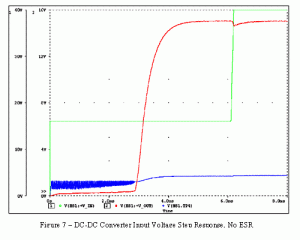NASA Langley experienced a failure of the TRMM instrument on the CERES spacecraft. NASA wanted to know why the instrument on the spacecraft has failed. STi utilized its unique system modeling approach to identify the root cause of the failure. The initial review of the telemetry data indicated that the thermal heating and in orbit poisition of the spacecraft were contributing to the eratic behavior of the instrument. The performance analysis was conducted to identify a scenario for the apparent in-orbit DC-DC Converter failure in CERES spacecraft. Based on telemetry data analysis received from the spacecraft over a period of several months, it was concluded that the performance of the DC-DC Converter is degrading over time.
DC-DC Converter model was tested to verify its performance against the data sheet performance. Here, the series resistances were added for the large inductors and capacitors at +15V outputs, as well as for the transformer. The values were taken directory from Interpoint specification control drawings (SCDs). The response to an input voltage transient step was examined. The input voltage was stepped up from 16V to 40V with a load of 1W(15W). In order to accurately assess the ramp-up (turn-on) time, all internal voltages were set to zero.
Figures-1 and 2 show the resulting transient response. Figure-1 gives the Converter output for the entire simulation. The ramp-up time is approximately 3 ms, which matches the data sheet almost exactly. In addition, the shape of the ramp-up is very closely matched. This ramp-up is slower primarily because of the series resistances that were added to the large reactances on the output end. Figure- 2 provides a close-up view of the transient, which occurs at 6 ms. The transient is less than 300 mV, which also matches the data sheet.


